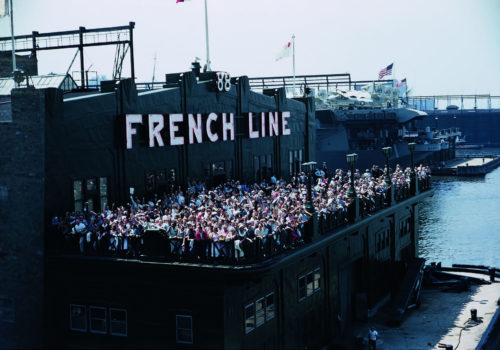Brassaï the photographer (1899–1984) long feared traveling to America. His friend Henry Miller, who had fled New York for Paris during the 1930’s, unfailingly described his country as hostile, closed minded, pitiless for the weak. Brassaï had long doubted himself. His faith in his artistic work only truly took form upon the release of his iconic book, Paris by Night (1933), of nighttime meanderings in a mysterious and magic capital city. In 1932, prior to the book’s publication, Brassaï refused an offer to expose in the Julien Levy Gallery in New York. “At the time, Brassaï was working as a cameraman on a film by Alexandre Korda, which took up most of his time,” explains Agnès de Gouvion Saint Cyr, Exhibition curator. “He preferred to keep his job. Above all, he didn’t feel ready.”
For over 20 years, despite the American success of Paris by Night, Brassaï continuously refused to travel across the Atlantic. In 1935, the photographer was recruited by Carmel Snow, editor of fashion magazine Harper’s Bazaar, with a particularly advantageous offer at the time: freedom to shoot one double page per issue, which would provide him with regular income. He published artists’ portraits and travel stories for nearly 30 years. His work was featured in several exhibitions in New York’s MoMA, invited by stark supporter Edward Steichen, director of the museum’s Department of Photography. But it wasn’t until 1957 that Brassaï finally traveled to the United States. Finally, he had overcome his fear to confront intimidating America: his infamous graffiti, raw works of art gathered in the streets and transformed through photography had been exposed to wild acclaim at the MoMA in 1956. And when the luxurious magazine Holiday requested commissioned work, he accepted. For 3000 dollars, he was asked to provide his photographic vision of America: he would travel to New York and Louisiana with very few requirements. It was merely suggested that he take pictures of New York’s 3rd avenue, and to take them in color. It was by chance that Agnès de Gouvion Saint Cyr discovered these totally unknown color slides in Brassaï’s archives. She used them for a book, and an exhibition with modern prints at Montpellier’s Pavillion Populaire. It is difficult to recognize the familiar Brassaï of Paris by Night, his thoughtful and delicately composed, occasionally posed, images. In the United States, the photographer had a more street photography approach, quick and moving. “In France, Brassaï was a hunter. It was impossible in New York, with the crowds and the noise” explains Gouvion Saint Cyr.
In many ways, this American adventure was a stylistic and temporal parenthesis in his career. As if the photographer had taken advantage of this commission to try new approaches, more or less successful. Brassaï always worked in medium format, but here, he would change cameras. He had no choice, in Louisiana, his camera fell into the Bayou! He was forced to use his Leica, a new camera he had taken with him to test in America. This Leica, a camera cherished by photographers, would be very useful for shooting American urban life: it allowed him to steal shots of passers by, swinging dresses, children swinging. Brassaï followed women in the streets, circling his subjects, taking pictures in sequence.
Another novelty, Brassaï would also use color, which he had only previously tested, on a new level. He would essentially use to color to highlight the American consumer society: popular toilets of the time, using and abusing stripes and plaids, New York street lights transforming into fireworks of blinking neons. A few images feature police arrests or buildings with broken windows, but for the most part, Brassaï seemed astounded by the energetic multicolored new world. America, this unknown land long feared, transformed into an enchantingly colorful land of plenty.
Claire Guillot
, Journalist, Le Monde.
This article has been published in Le Monde Magazine, June 2011
Brassaï en Amérique, 1957
Through October 30
Pavillon Populaire
Tous les jours sauf le lundi de 10h à 12h30 et de 13h30 à 18h
Entrée libre
Esplanade Charles De Gaulle
34 000 Montpellier
















